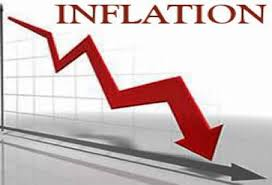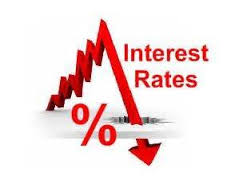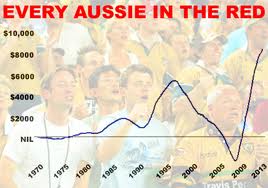

Myth 1 – Property prices double every 7 to 10 years.
There are a lot of property myths out there about Australian property, but one of the most pervasive is that property supposedly doubles every seven to 10 years. But does it really?
Anybody who bought property in the past 45 or so years has been the beneficiary of the huge loosening of credit brought about by US President Johnson in 1968 and US President Nixon in 1971 decoupling and then severing the link between the US dollar and gold. Prior to this, under the Bretton Woods agreement in 1944 the US dollar was backed by gold. The world’s currencies were also indirectly backed by gold, by virtue of the fact that the world’s currencies were valued against the US dollar on the exchange rate.
That all changed when the gold link was severed. What that did, in essence, was to change the economy from gold backed to a credit backed and driven economy. This meant the economy would only grow if credit was increasing, so people were greatly encouraged to accumulate more debt by governments and central bankers. And many people were happy to oblige.
This was never going to continue indefinitely. And in this low inflation, low interest environment, it is now starting to pull back.
When looking at Australian house prices from about 1880 until late 1960’s/early 1970’s, prices were relatively flat, when adjusted for inflation. Once credit was loosened however, from the late 1960’s onward, house prices went parabolic over and above the inflation rates. The gains seen over the past 45 or so years are a product of this huge credit expansion.
Pretty much anybody who purchased a house in that time benefitted from increasing property values. Unless they were actually located over a mine shaft, too close to the edge of an eroding cliff, bought at the top of a local bubble, eg. Gold Coast real estate during the 1970’s and 1980’s or they simply paid too much in the first place (which eventually corrected due to increasing prices), prices generally went up far in excess of the inflation rate.
The people who benefitted from this windfall weren’t geniuses, they were just in the right place at the right time. But many thought they were because they made money each time they sold and because they didn’t understand the underlying parameters that allowed this to occur.
So the myth of property prices doubling every seven to 10 years was born. The fact that this had only happened over the past 45 or so years, didn’t factor into the thinking. “Just over the past 45 years” somehow became “Always”.

There were even pretty graphs with a starting year point and an ending year point to support this “fact”, but once again, the data was extrapolated and prices averaged out over the time frame, rather than show actual annual prices for the period in question. And more often than not, these were not adjusted for inflation. As previously mentioned, property prices stayed fairly flat from 1880 until the late 1960’s/early 1970’s. They certainly didn’t double, for example, from 1910 to 1920 or 1930 to 1940, but the graphs made it appear as though it did.
Now, however, in the current period of low inflation and low interest rates, I believe property prices are reverting back to the more normal mean of only increasing in line with inflation.
Changing demographics as baby boomers retire and change from spenders into savers, will impact on house prices as well, particularly when they start to sell their assets to fund their retirement. Not just prices for property, but shares and businesses as well.
The glut of flats being built in and around Australia’s capital cities will also have a dampening effect on housing prices, particularly in attached dwellings.
Property price corrections could happen as soon as the 2017-2018 financial year, if not even sooner. This glut is mostly investor style stock in the form of tiny one or two bedroom flats. Some are so small you don’t need to bring your cat with you on inspection to know that you won’t be able to swing it in there. This represents a finite and small market. There are not many that have been designed for owner occupiers or families.

The largest Australian demographic is still families with children, making up nearly half of households, and household sizes are also increasing, not decreasing. Of the other half of singles and couples not all of them necessarily want to live in a flat. According to Matusik the demand for this type of property represents a much smaller percentage than that for detached, semi-detached (with a garden) or small lot housing suitable for families with children and/or pets. And not a great deal is being built for aged care or people who want to age in place with single level, no stairs and no lift dwellings, although this is changing slowly.
I can see a time very soon when even those who have managed to purchase and settle on these flats, will tire of low, no or even negative capital gain, low rental yields and longer vacancies due to the glut. However they still have to fork out every month to pay for the expenses.
It doesn’t help that our greedy and lazy Councils and state governments are only too happy to keep adding more and more blocks of flats. The incentive for them is to keep this gravy train rolling on as long as it can as it represents the biggest return for them.
The key here is the long term. In the short term, prices may rise but they can also fall. Capital gain only really exists if it is a realised capital gain.
Which brings us to our next myth.
Myth 2 – Australia property prices never fall.
The way the global economies are at the moment, there is no guarantee that prices will remain stable, let alone increase any time soon. And with the glut of flats coming into the market in a number of capital cities, most likely just as the global market enters a serious downturn, falling real estate prices are a very real option, particularly from investors exiting the market. As previously mentioned, when they are not seeing any real capital gain (after inflation) and thanks to the glut, have very low yields and longer vacancy periods, but still have to put their hand in their pocket every month for expenses, they’ll start to sell.

Real estate, after all, is a non-productive consumption item.
What goes up can also come down. What people don’t seem to realise is that unless any capital gain is locked in or realised (ie. sold at the highest valuation price), it’s not real capital gain. You cannot rely on the greater fool theory forever. This is the theory that a greater fool will come along and pay you more for your “asset” than you paid for it initially. The banks have been complicit in this, allowing borrowing against any increase in equity so the debt load is constantly increasing. This strategy is also pushed by property spruikers as a means of increasing your property portfolio. It’s amazing how many interviews I’ve heard where a guest is introduced as a property investor with an “X” million dollar property portfolio.
Yep, they might “own” $2m worth of property, but if it’s secured against a debt of $2.5m, that’s hardly a sound financial position to be in. If and when that happens, the friendly bank won’t be so friendly any more.
The problem is that, as previously mentioned, housing is a non-productive consumption item whose purpose is to provide shelter, but is being sold as an investment item. Refer to the aforementioned paragraph on investor quality blocks of tiny one or two bedroom flats being built in just about every Australian capital inner city. These are not attractive for families who generally require more bedrooms and prefer detached, semi-detached with garden or small lot housing.
I feel for those who have been suckered in to buying one of these off the plan “disaster waiting to happen” flats, particularly if they can’t settle when the time comes.
As well as property not doubling every seven to 10 years over a long period of time, so is it entirely possible that Australian property prices can actually fall. And this is even more likely at this particular juncture.
We are entering a deflationary period, a period of asset price falls. The reason the massive money printing or quantitative easing programs we have seen over the past few years by many countries including the US, Japan, Europe and UK, to name but a few, have not succeeded in increasing asset prices consistently, kick starting the economy or causing massive inflation or even hyperinflation is that this money printing has just stopped the deflationary forces from having their full effect.
There is a train of thought, particularly amongst politicians and central bankers that inflation is good but deflation is bad. But I disagree that inflation is bad. Before the turn of the last century, and incidentally before the proliferation of central banks, deflation was as much a part of an economy as inflation. Before the 1900’s periods of inflation was generally always matched with periods of deflation.
It was only when central banks decided that deflation was a bad thing and we should only have inflation, that we have had persistent inflation. Inflation has only been a feature of modern economies from about the 1910’s onwards (incidentally, the US Federal Reserve Bank came into being in 1913).
Why is deflation the enemy? Deflationary periods are useful to dampen mal-investments and bring the economy back into equilibrium.

Japan is entering its third lost “decade” of deflationary period. Asset prices (property, stocks and businesses) are about half the value they were during the 1980’s and have never recovered those highs. The various governments of the day have tried desperately to stimulate inflation and asset price growth through massive quantitative easing (far greater than the US) and zero and negative interest rate policies. It hasn’t worked, the inflation rate is still negligible and asset prices are still languishing. And yet Japan is still ticking along nicely and they’re in no immediate economic trouble. Why? Because inflation isn’t needed!
And why are our politicians and central banks so desperate to see inflation? Because it increases asset prices, which brings about the so called “wealth effect”. When asset prices are rising, people feel wealthier and more secure and this supposedly makes people spend more. And why is this a good thing? Because under a fiat monetary system (pretty much all developed nations and most developing nations) in order for the economy to grow, we need to borrow more and get further and further into debt. In other words consume today with tomorrow’s income.
The markets can only be gamed for so long before they revert back to the mean. We are probably now entering an extended deflationary period and sluggish global economic growth, after more than 100 years of constant inflation. Get used to it, this is most likely the new normal.
Oh, and I’ve said it before and I’ll say it again. In a properly functioning economy, all assets, including property, only rise in line with inflation. Maybe we’re reverting to the mean on that too.



Click to read article on LinkedIn.
 Not just in Westeros for Game of Thrones fans. There is undoubtedly a chill in the air now and winter is officially upon us. But as the days grow shorter and the air gets cooler there are some things you do that can push up costs.
Not just in Westeros for Game of Thrones fans. There is undoubtedly a chill in the air now and winter is officially upon us. But as the days grow shorter and the air gets cooler there are some things you do that can push up costs. Keep in the warmth: If you are able, have your north facing windows open during sunny days so some of the daytime heat can come inside. As soon as it starts to get dark, close your windows, or if you like to let in fresh air, leave them slightly open. Once dark, draw curtains or close blinds to keep in the heat.
Keep in the warmth: If you are able, have your north facing windows open during sunny days so some of the daytime heat can come inside. As soon as it starts to get dark, close your windows, or if you like to let in fresh air, leave them slightly open. Once dark, draw curtains or close blinds to keep in the heat.

































